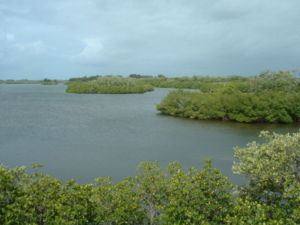 | ||
Similar Pelican Island National, Sebastian Inlet, Round Island Beach Park, McKee Botanical Garden, Hutchinson Island | ||
Orchid Island (Yami: Ponso no Tao; Chinese: 蘭嶼; pinyin: Lán Yǔ; Pe̍h-ōe-jī: Lân-sū) is a 45 km² high island off the southeastern coast of Taiwan Island and separated from the Batanes of the Philippines by the Bashi Channel of the Luzon Strait. It is governed as Lanyu Township of Taitung County, Taiwan.
Contents
Map of Orchid Island, Florida 32963, USA
The island is home to the Tao, an ethnic minority group who migrated to the island from the Batan Archipelago 800 years ago. The island is known to them as Ponso no Tao "Island of the people" or Irala. Out of a total current population of 4000, approximately 2400 belong to the aboriginal Tao community and the remaining 1600 are mainly Han Chinese. In neighboring Philippines the island is referred to as Botel Tobago.
The Lanyu nuclear waste storage facility was built in 1982 without prior consultation with the island's Tao natives. The plant receives nuclear waste from Taiwan's three nuclear power plants operated by state utility Taiwan Power Company (Taipower). About 100,000 barrels of nuclear waste from the nation’s three operational nuclear power plants have been stored at the Lanyu complex. In 2002 and 2012, there were major protests from local residents, calling on Taipower to remove the nuclear waste from the island.
Early historyEdit
The island was first mapped on Japanese charts as Tabako-shima in the early 17th century and Tabaco Xima on a French map of 1654. The Chinese, who had no contact with the inhabitants of the island, called it Ang-thau-su (Chinese: 紅頭嶼; pinyin: Hóngtóuyǔ; Pe̍h-ōe-jī: Âng-thâu-sū; literally: "Red-headed island"), from which it was called Kōtō-sho (紅頭嶼) during Japanese rule. The Japanese government declared the island an ethnological research area off-limits to the public.
Republic of ChinaEdit
This restriction remained in effect when the Republic of China took over Taiwan in 1945, but was lifted in 1967. It was because of the restriction that the Tao have the best preserved traditions among the Taiwanese aborigines. Since then, schools were built on the island and education in Standard Chinese became compulsory. Tourism to the island has also increased. The island is known by the Amis people as Buturu and by the Puyuma as Botol.
On January 19, 1946, the island was designated as Hongtouyu Township (Chinese: 紅頭嶼鄉) of Taitung County. November 24 of that year, it was renamed Orchid Island (Lanyu), after the local Phalaenopsis orchids.
GeographyEdit
There are eight mountains over 400 m high. The tallest mountain is Mt. Hongtoushan (紅頭山) at 552 m. The rock on the island is volcanic tholeiite andesite, and volcanic explosive fragments. The volcano erupted in the Miocene period. It is part of the Luzon Volcanic Arc. Magma was formed from underthrusting oceanic crust under compression about 20 km deep. The andesite rock contains some visible crystals of pyroxene or amphibole. The geochemistry of the rock shows it is enriched in sodium, magnesium and nickel, but depleted in iron, aluminium, potassium, titanium, and strontium.
As the island is within the tropics, the island experiences a warm and rainy tropical climate throughout the year with humidity often reaching more than 90%. Rainfall, abundant throughout the year, cools the temperature significantly. The climate is classified as a monsoon-influenced Koppen's tropical rainforest climate (Af), with annual temperatures averaging around 23 °C on the mountain and 26 °C on the coasts, one of the highest in Taiwan.
Lesser Orchid Island (Wade-Giles: Hsiao Lan Yü; Pinyin: Xiao Lanyu; Little Botel-Tobago), an uninhabited volcanic islet near the main Orchid Island, is the southernmost point of Taitung County. It has been the target of military airplanes' target practice. It is home to a critically endangered endemic orchid, Phalaenopsis equestris f. aurea.
